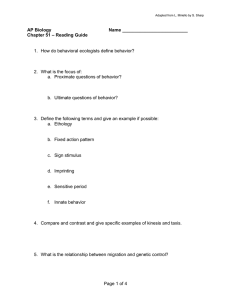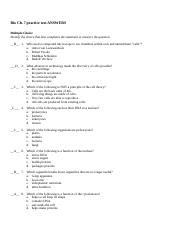

- #Ch 14 ap bio study guide answers how to#
- #Ch 14 ap bio study guide answers registration#
The true-breeding parents are the P generation, and their hybrid offspring are the F1 generation. In a typical breeding experiment, Mendel would cross-pollinate (hybridize) two contrasting, true-breeding pea varieties. When true-breeding plants self-pollinate, all their offspring have the same traits. Mendel started his experiments with varieties that were true-breeding. He avoided traits, such as seed weight, that varied on a continuum. For example, he worked with flowers that were either purple or white. Mendel tracked only those characters that varied in an “either-or” manner, rather than a “more-or-less” manner. However, Mendel could also use pollen from another plant for cross-pollination. In nature, pea plants typically self-fertilize, fertilizing ova with the sperm nuclei from their own pollen. Each pea plant has male (stamens) and female (carpal) sexual organs. Mendel could strictly control which plants mated with which. Pea plants are available in many varieties with distinct heritable features, or characters, with different variant traits. Pea plants have several advantages for genetic study. Around 1857, Mendel began breeding garden peas to study inheritance. The monks at this monastery had a long tradition of interest in the breeding of plants, including peas. 
After university, Mendel taught at the Brunn Modern School and lived in the local monastery.These influences came together in Mendel’s experiments.He studied at the University of Vienna from 1851 to 1853, where he was influenced by a physicist who encouraged experimentation and the application of mathematics to science and by a botanist who stimulated Mendel’s interest in the causes of variation in plants.In 1843, Mendel entered an Augustinian monastery.Mendel grew up on a small farm in what is today the Czech Republic.Mendel discovered the basic principles of heredity by breeding garden peas in carefully planned experiments.Modern genetics began in an abbey garden, where a monk named Gregor Mendel documented a particulate mechanism of inheritance.Ĭoncept 14.1 Mendel used the scientific approach to identify two laws of inheritance.Genes can be sorted and passed on, generation after generation, in undiluted form.An alternative model, “particulate” inheritance, proposes that parents pass on discrete heritable units, genes, that retain their separate identities in offspring.Everyday observations and the results of breeding experiments tell us that heritable traits do not blend to become uniform.With blending inheritance, a freely mating population will eventually give rise to a uniform population of individuals.This hypothesis proposes that genetic material contributed by each parent mixes in a manner analogous to the way blue and yellow paints blend to make green.One possible explanation for heredity is a “blending” hypothesis.These traits are transmitted from parents to offspring.
 Every day we observe heritable variations (such as brown, green, or blue eyes) among individuals in a population. As always, you have the flexibility to organize the course content as you like. The AP Biology framework is organized into eight commonly taught units of study that provide one The framework also encourages instruction that prepares students for advanced work in STEM majors. The framework specifies what students must know, be able to do, and understand, with a focus on the big ideas that encompass core principles, theories, and processes of the discipline. Learning Opportunities for AP Coordinatorsīased on the Understanding by Design® (Wiggins and McTighe) model, this course framework provides a clear and detailed description of the course requirements necessary for student success. AP World Language and Cultures Webinars. AP History and Social Sciences Webinars. AP Computer Science Female Diversity Award. Score Reports and Services for Colleges.
Every day we observe heritable variations (such as brown, green, or blue eyes) among individuals in a population. As always, you have the flexibility to organize the course content as you like. The AP Biology framework is organized into eight commonly taught units of study that provide one The framework also encourages instruction that prepares students for advanced work in STEM majors. The framework specifies what students must know, be able to do, and understand, with a focus on the big ideas that encompass core principles, theories, and processes of the discipline. Learning Opportunities for AP Coordinatorsīased on the Understanding by Design® (Wiggins and McTighe) model, this course framework provides a clear and detailed description of the course requirements necessary for student success. AP World Language and Cultures Webinars. AP History and Social Sciences Webinars. AP Computer Science Female Diversity Award. Score Reports and Services for Colleges. #Ch 14 ap bio study guide answers how to#
How to Access Score Reports for Educators. Rebates for Schools with Large AP Programs. What Students Should & Should Not Bring. Transfer Students To or Out of Your School. Schools That Administer AP Exams but Don’t Offer AP Courses. Homeschooled, Independent Study, and Virtual School Students and Students from Other Schools. AP Exam Fee Collection Provider Program. #Ch 14 ap bio study guide answers registration#
Access and Initial Setup in AP Registration and Ordering.National Examinations in World Languages.2020 AP with WE Service Scholarship Winners.







 0 kommentar(er)
0 kommentar(er)
